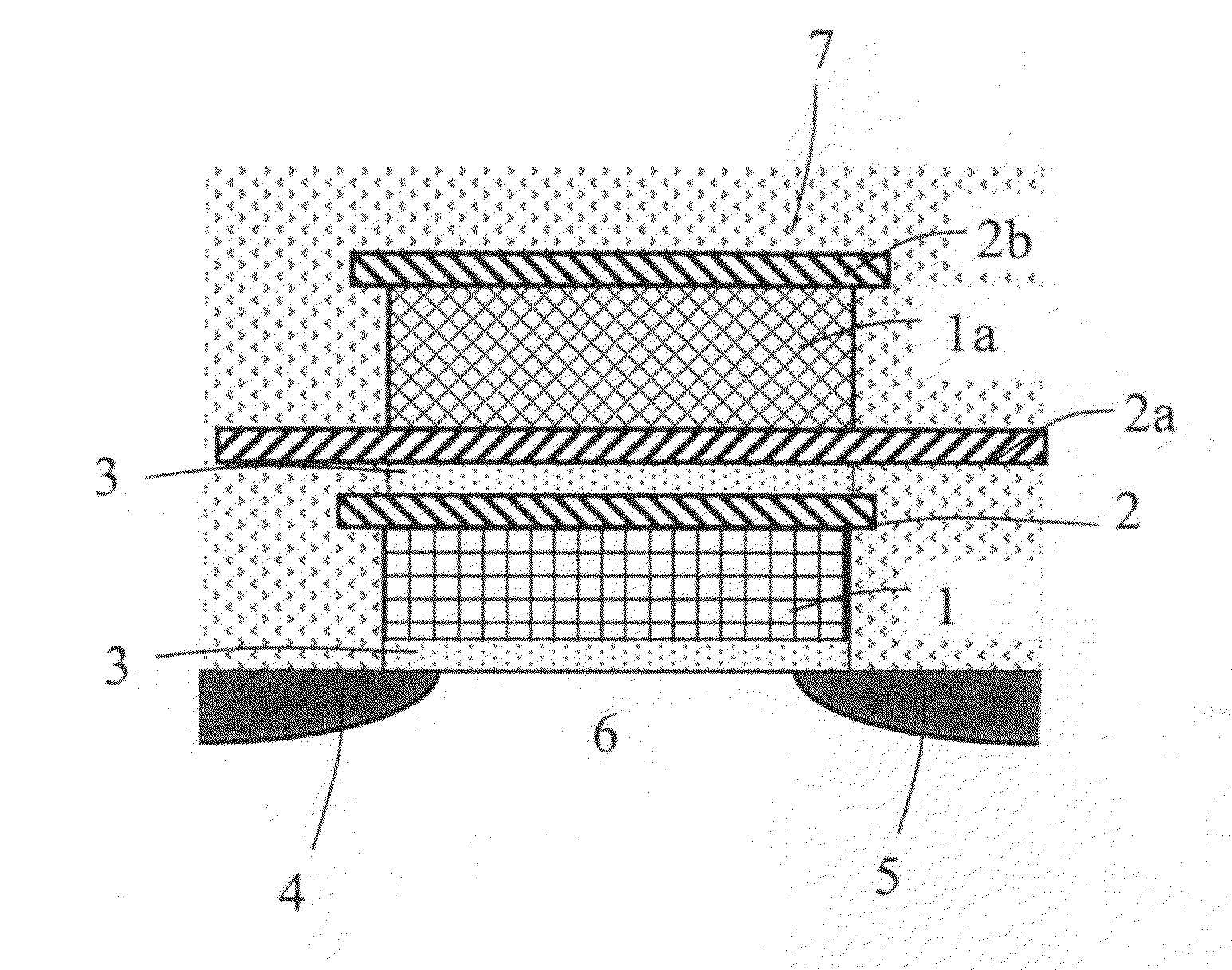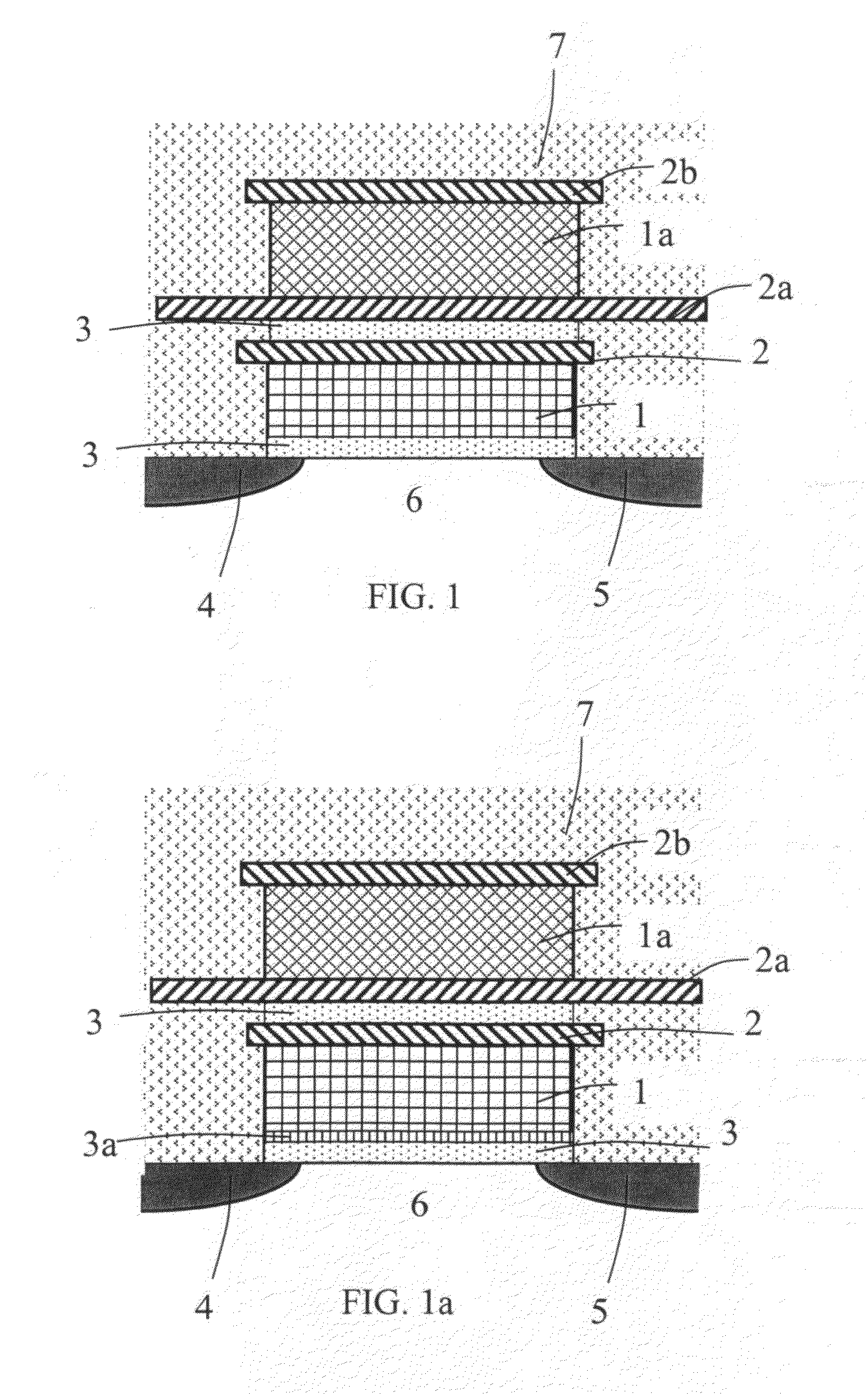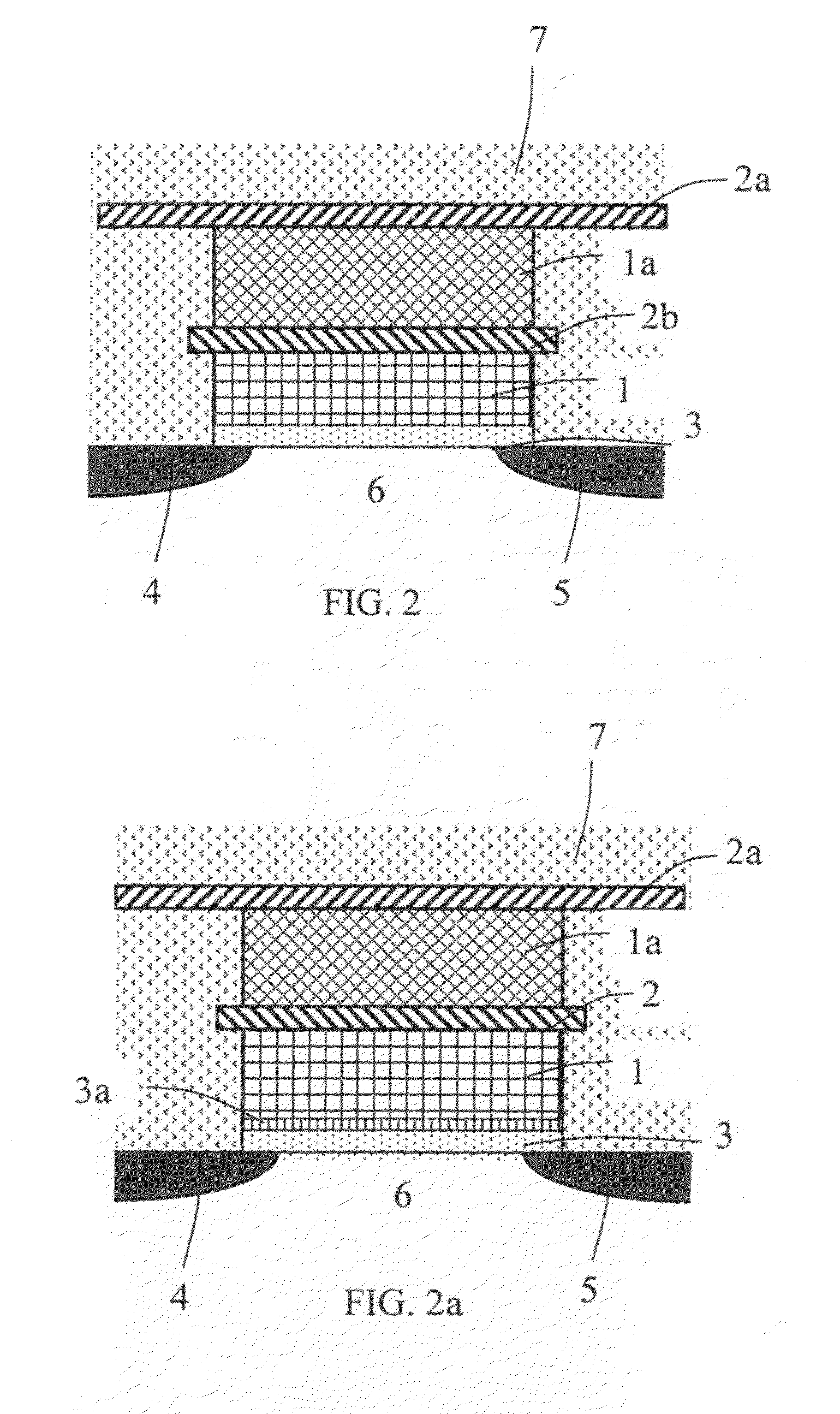Nondestructive methods of reading information in ferroelectric memory elements
a technology of ferroelectric memory elements and non-destructive methods, which is applied in the field of non-destructive methods of reading information in ferroelectric memory elements, can solve the problems that the principle of data reading does not provide for its unloading, and achieve the effects of short programming time, increased sensitivity to resilience, and greater distance between memory cells
- Summary
- Abstract
- Description
- Claims
- Application Information
AI Technical Summary
Benefits of technology
Problems solved by technology
Method used
Image
Examples
Embodiment Construction
[0069]Option 1
[0070]Claimed memory cell (FIG. 1) contains field transistor made on the base of silicon of p-type and consisting of the source (4), drain (5) and conductive channel (6). The floating gate (1) is made on the base of hard solution of plumbum (Pb) zirconate-titanate Pb(ZrTi)O3 (PZT) and is a piezoelement separated from the conductive channel by the dielectric layer (3), made from silicon oxide. Over the piezoelement there is a memory cell (1a) made also on the base of PZT and separated from the piezoelement by the dielectric layer (3), made also from silicon oxide. All electrodes (2, 2a, 2b) are made from aluminum. At the primary initiation of the memory element operation polarizing voltage is once supplied to the upper electrode (2) of the piezoelement and to the source (4) of the transistor. Polarity of the supplied voltage is determined by the protocol of information exchange between the piezoelement and memory cell and can be selected at random. To program the memory...
PUM
 Login to View More
Login to View More Abstract
Description
Claims
Application Information
 Login to View More
Login to View More - R&D
- Intellectual Property
- Life Sciences
- Materials
- Tech Scout
- Unparalleled Data Quality
- Higher Quality Content
- 60% Fewer Hallucinations
Browse by: Latest US Patents, China's latest patents, Technical Efficacy Thesaurus, Application Domain, Technology Topic, Popular Technical Reports.
© 2025 PatSnap. All rights reserved.Legal|Privacy policy|Modern Slavery Act Transparency Statement|Sitemap|About US| Contact US: help@patsnap.com



